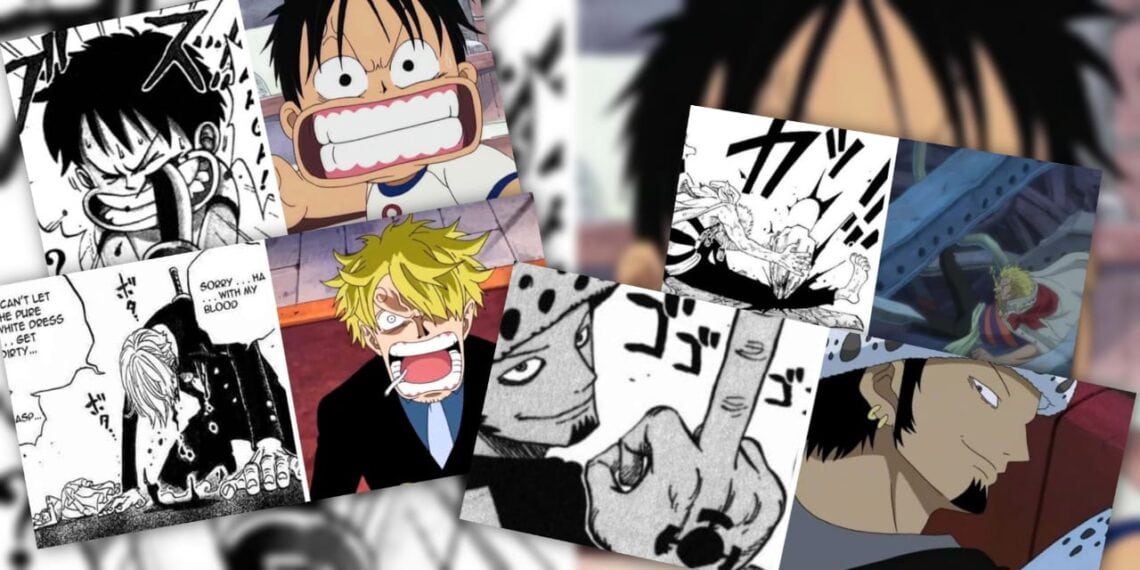While on the surface One Piece presents a bright and adventurous world, the manga contains several disturbing scenes and themes that have been modified or removed in the anime adaptation.
As the manga’s storyline progresses, the violence and peril portrayed become increasingly severe. However, the anime aims for a younger target audience, so certain horrific moments from the manga have been altered or toned down for the screen. This includes scenes of intense action violence that were likely deemed too graphic or intense for young viewers.
In addition, some content from the manga involves gestures, language, or behavior that could be seen as disrespectful or inappropriate for children.
The anime adaptation omits or adjusts these moments to align with standards for appropriate content. There are also fantastical elements in the manga that stretch believability too far for the anime’s creators.
Despite One Piece building an imaginative world filled with powers and mysteries, certain manga scenes cross a threshold beyond suspension of disbelief for the showrunners.
Finally, real-world timing and events have unfortunately impacted decisions on portraying particular story elements that then differ from the manga source material. This speaks to the complex considerations that go into adapting and presenting a global anime series.
15 Shocking ‘One Piece’ Scenes Too Intense for the Anime
Here are the top 15 scenes from the manga series One Piece, that are too intense to adapt for anime fans.
15. Wapol Without a Head
In the Drum Island storyline, there’s a scene where the villain Wapol gets decapitated by Dalton in the manga. This shows how ruthless the One Piece world can be.
However, since Wapol has an elite medical team at his command, his head is promptly reattached and he suffers no long-term injury.
The anime adaption made the choice to alter this violent scene. Instead of showing a decapitation, even temporarily, the anime has Dalton strike Wapol’s chest rather than detach his head.

This change likely happened because an on-screen beheading, despite the magical reattachment, would be considered too intense and disturbing for the anime’s younger viewership.
So in the manga, we witness an alarming level of violence inflicted on a key antagonist, only for his personal doctors to undo the damage through strange medical feats.
The anime diligently tones this down into more of a standard villain defeat, avoiding the graphic visceral imagery from the original scene.
It’s an interesting example of the anime taking steps to filter out moments that exceed standards, frustrate suspension of disbelief, or could be upsetting.
Fans of the manga experience unedited scenes that the anime’s producers determine are inappropriate for their core audience.
14. Foxy Pierced by Spikes
In the unconventional world of One Piece, characters endure all manners of over-the-top violence and still carry on. But some scenes from the manga push the boundaries too far for the anime series.
One such moment occurs when the pirate captain Foxy narrowly avoids a lethal accident. In the manga, Luffy inadvertently launches a cannonball that knocks Foxy headfirst into a pit of spikes, with a spike shown spearing his temple.
It’s an alarming scene that suggests Foxy perished. However, he later returns alive, with his survival unexplained.
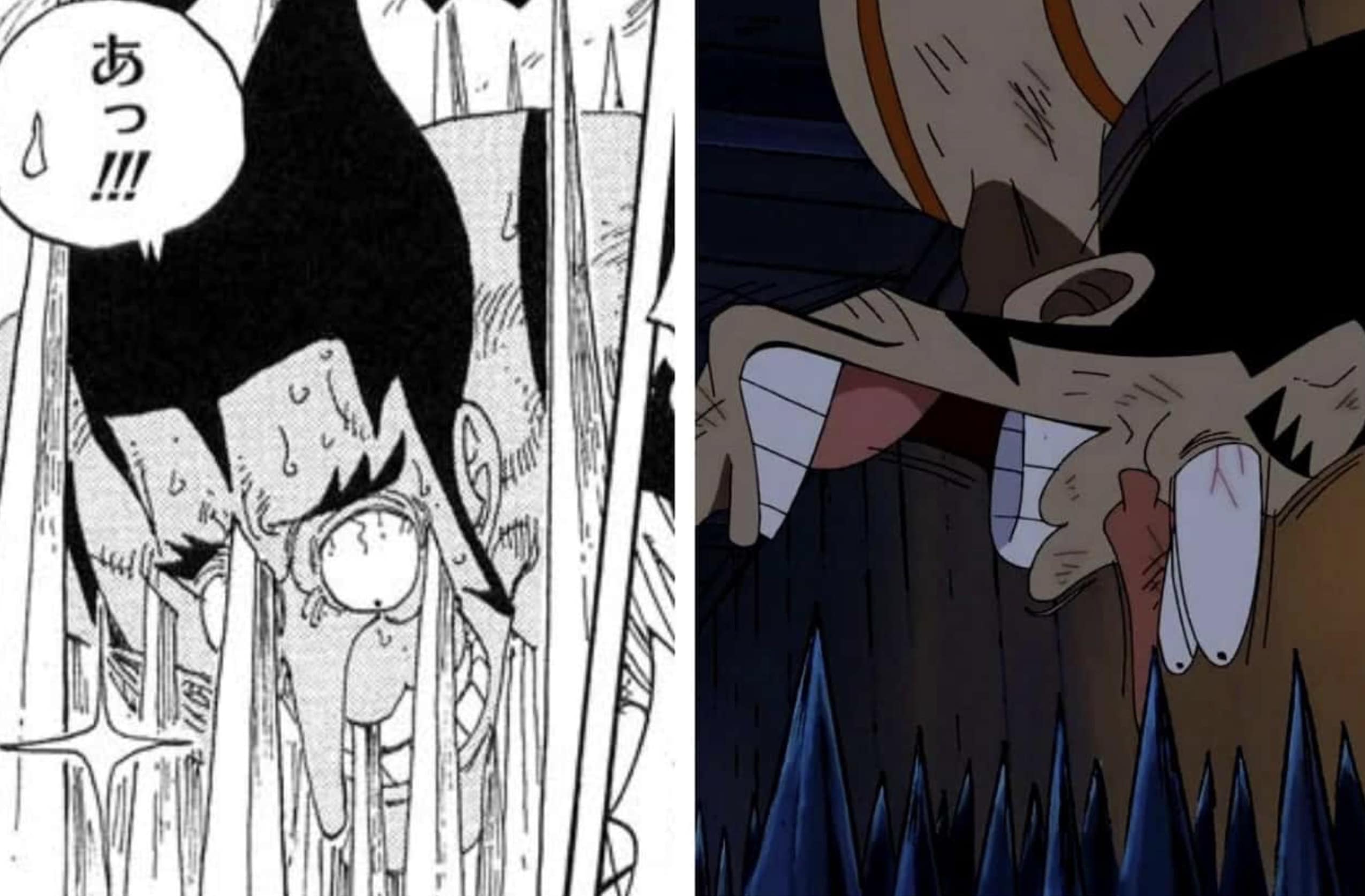
The anime team apparently deemed this entire sequence too graphic and unrealistic. In the adapted scene, Foxy still falls towards the spikes but lands mere inches from impalement, dodging certain death.
The anime avoids depicting the gruesome spike-through-the-head scene, which could disturb younger audiences. Instead, it taps down the intensity to align with what viewers can comfortably accept.
In the manga, Oda is willing to stretch the limits of even cartoon logic with these intense moments. The anime adaptation exercises more restraint when bringing the story to the screen.
Fans of the manga experience unfiltered scenes that the anime team filters or reworks to match their standards and target demographic.
13. Head Struck by a Chakram
Luffy’s rubber body allows him to endure all kinds of wild attacks, but even his tolerance gets tested in the manga through intense scenes deemed too far for the anime.
One such moment shows Luffy taking a chakram (a sharp throwing weapon) directly to the back of the head, cutting him open. He survives due to his extreme durability, showcasing the outrageous harm Luffy can shake off. However, the vivid violence of the manga scene crosses a line for the anime adaptation.
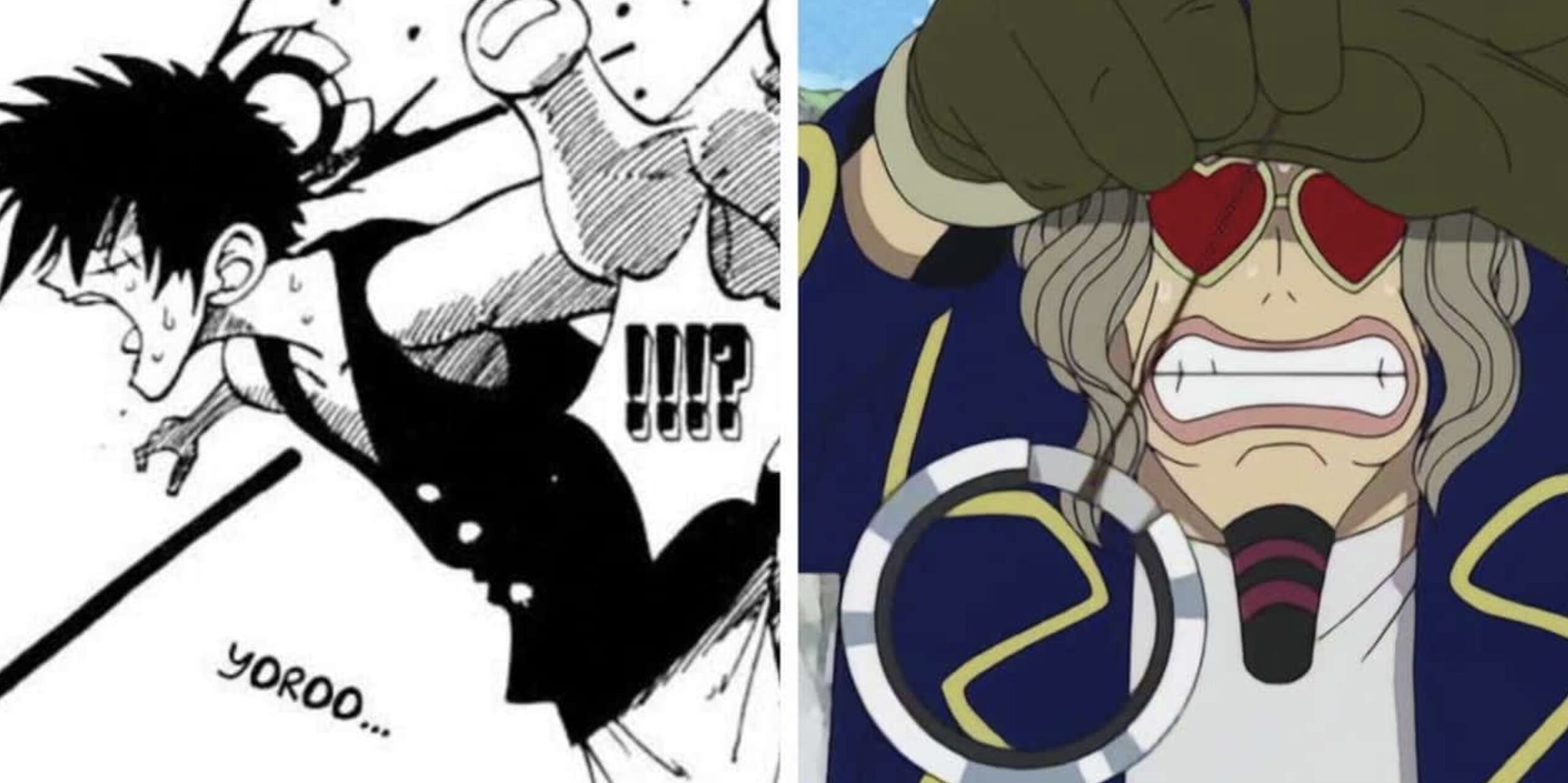
Instead, the anime depicts Luffy catching the incoming chakram with his teeth in a still-impressive feat. But it spares viewers from seeing a gory head wound. The anime once again alters a manga scene that pushes violence boundaries too far for screening to a wide audience.
Oda frequently explores shocking and intense moments in the original One Piece chapters, while the anime adaptation often reworks or omits scenes considered too graphic, gory, or pause-inducing.
As a result, fans of the manga are exposed to unfiltered content that the anime’s producers deem unsuitable for the target viewership.
So in the journey from manga panel to animation cel, some degree of disturbance, intensity, and implausibility gets filtered out when interpreting One Piece for global audiences. The anime aims to thrill viewers without crossing lines of excessive violence.
12. Dorry and Brogy Taking Down Dinosaurs
The giants Dorry and Brogy who inhabit Little Garden display their mighty power in the manga by decapitating dinosaurs. Explicit scenes show them mercilessly chopping off dino heads as they gather food. However, the brutal nature of these scenes exceeded the anime’s standards.
Rather than directly show the giants’ vicious dinosaur attacks, the anime takes a more indirect approach. For one dino beheading by Brogy, we only see a splashy reflection in the water.
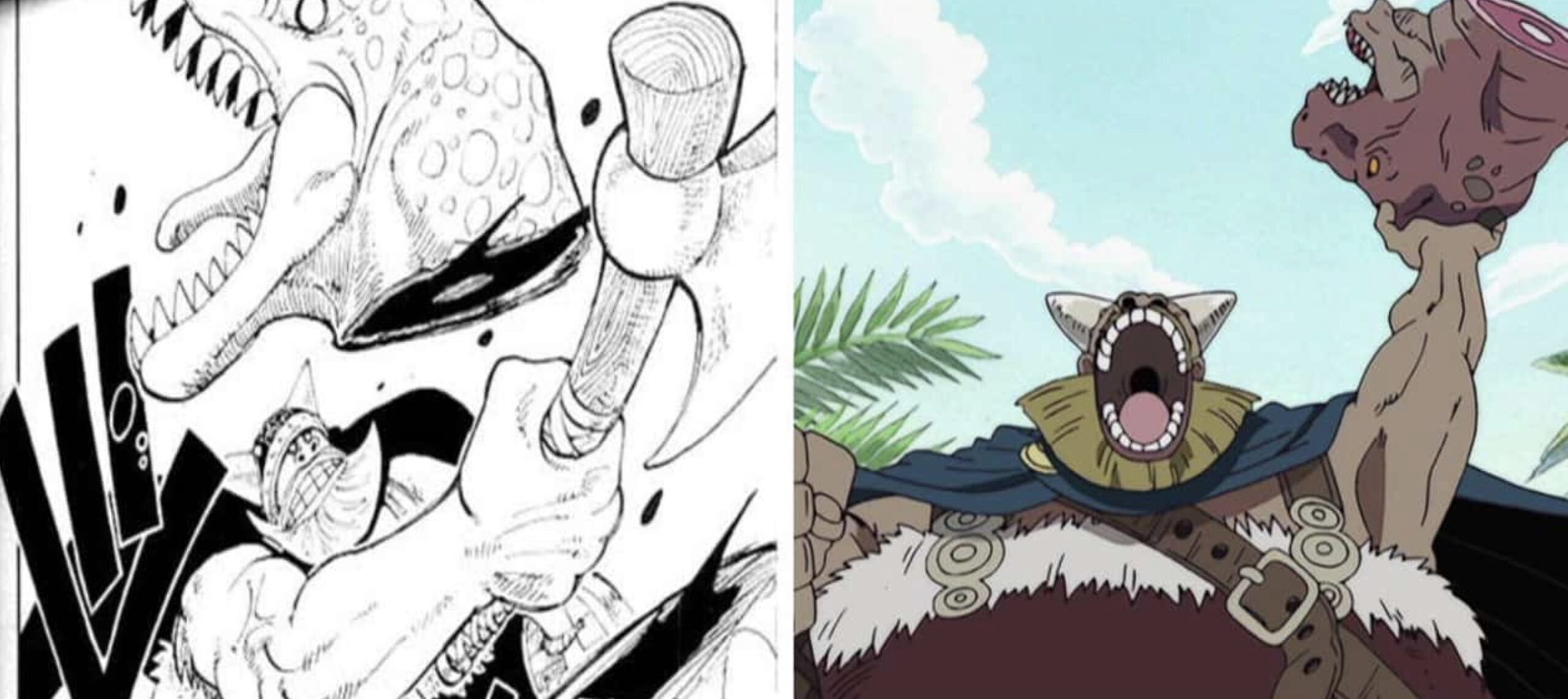
And for another decapitation by Dorry, the takedown happens off-screen with sounds implying violence.
By utilizing visual tricks and audio cues rather than depicting the graphic moments, the anime dilution balances the giants’ strength with a sensitivity towards violence. The original manga contains explicit decapitations, while the anime adaptation omits the disturbing visuals unsuitable for its younger viewers.
Once again, Oda’s unfiltered manga imagery gives way to a tamer anime interpretation.
Fans of the manga see the full range of violence and intensity from Oda’s mind, while the anime carefully calibrates its portrayal of the same moments for its core global audience.
So an element of censorship prevails from the pages to the screen.
11. Absalom’s Backstab
Regrettably, a disturbing real-world attack influenced the censorship of a Thriller Bark scene where Absalom stabs Sanji in the manga. The anime originally mirrored this brutal backstabbing. But soon after, Japan suffered a tragic mass stabbing event with parallels to the planned anime scene.
Out of sensitivity and avoiding triggers, the anime team altered the scene for the TV broadcast. Instead of a knife wound, Sanji takes a kick to the back. Yet his bloody injury remains, creating an inconsistency likely deemed necessary to uphold standards.
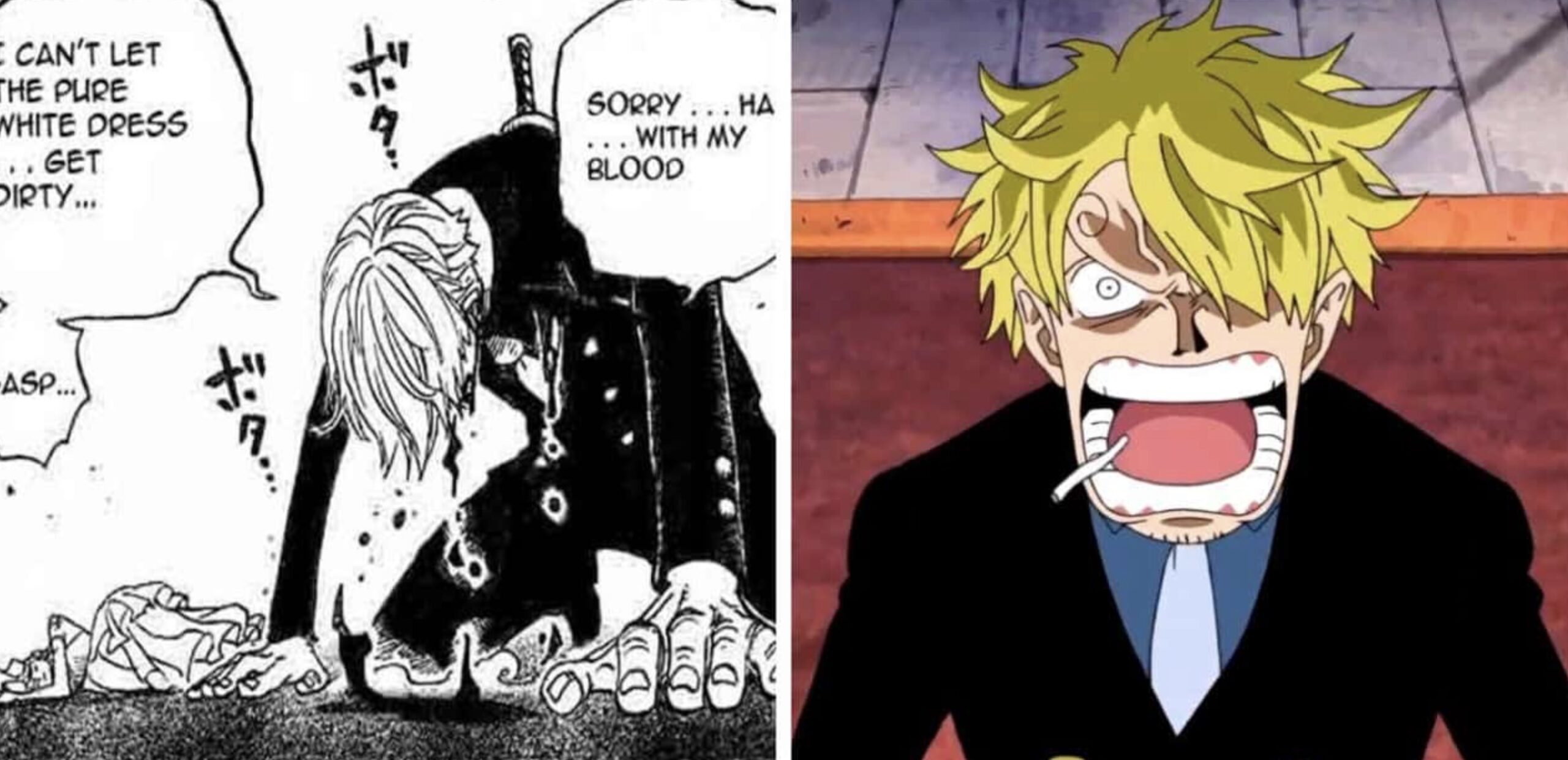
The timing was devastating and forced tough choices about portraying onscreen violence. Eventually for the home media version, the original manga scene was restored.
But the editing for public TV demonstrates real tragedy can sway what content gets filtered even in a fantasy series.
Oda crafted the harsh Absalom-Sanji combat scene in his story. The anime team itself initially animated it unedited.
But they couldn’t have predicted how life events would require last-minute censorship. Realism crashed into fantasy and dictated creative choices.
So the manga stands as Oda’s full vision while the anime must weigh many factors in portraying that vision to a younger audience.
The original manga scars Sanji without hesitation, but the anime altered the scene out of respect for human suffering.
10. Ending the Finger Gestures
Among the manga’s humor is a running joke of characters throwing attitude by flipping their middle fingers. These irreverent gestures get laughs by pushing the boundaries of good behavior.
However, the anime avoids directly showing such vulgar conduct unsuitable for young viewers.
A prime example is Trafalgar Law crassly giving Eustass Kid the finger during a tense meetup. It epitomizes Law’s rebel spirit in the face of adversaries.
Yet despite the manga’s free expression, the anime never shows the rude hand sign, replacing it with just a smug look.
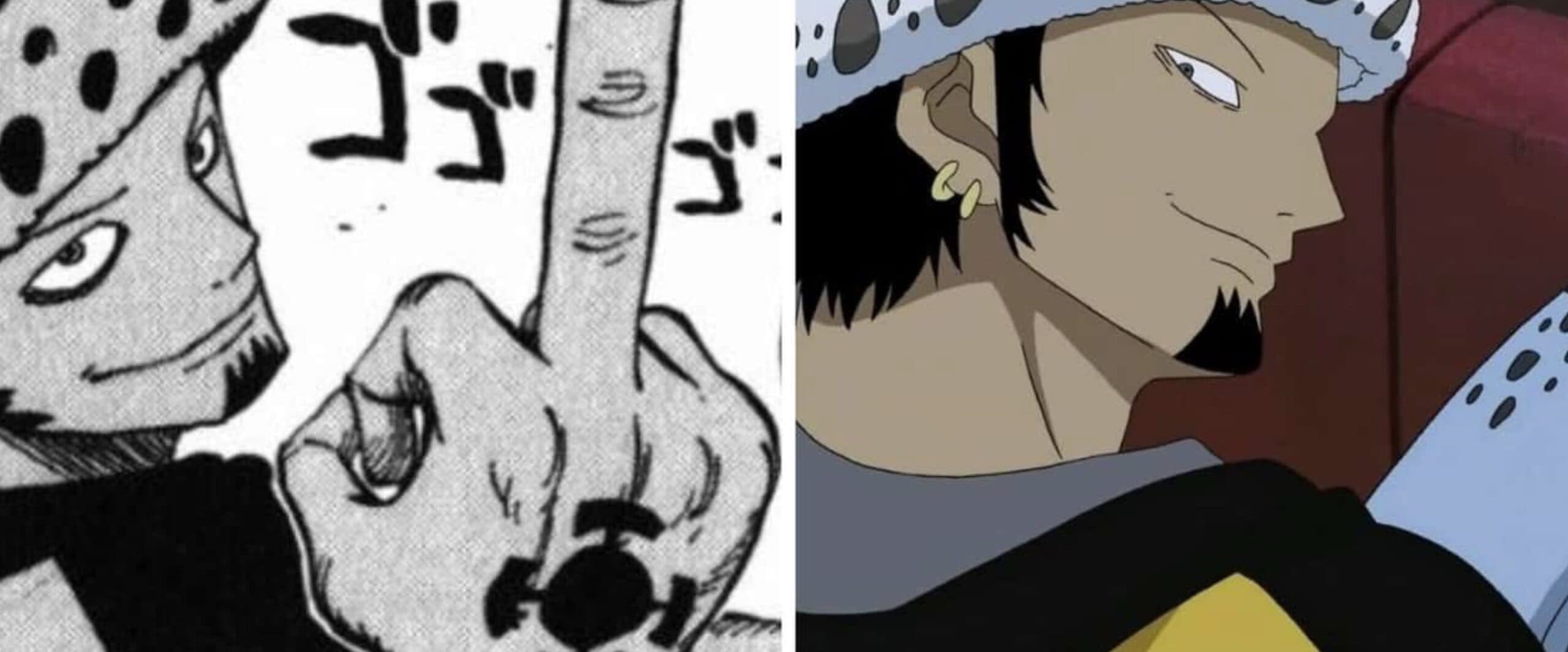
In fact, several of Law’s signature middle finger moments never reach animation. The anime downplays his confrontational tendencies for its target audience.
Oda can leverage a mature edge through vulgarity in the manga. But the anime adaptation filters behavior it deems too inappropriate or impressionable for children, creating a disconnect between mediums.
So manga readers experience Oda’s original personality inflections that the anime sanitizes. The animators uphold certain standards of decorum when translating scenes to the screen.
As a result, traces of attitude and uncouth gestures seen on paper get edited out of the televised anime. Once again the manga contains moments too rough or risky for animation.
9. Zoro Defeats Helmeppo’s Wolf Companion
The manga depicts Zoro’s fierce character by showing him killing a wolf to protect a girl, leading to his arrest. This intense scene establishes Zoro’s courage to battle threats endangering the innocent.
However, the anime skips this violent display for a softer introduction.
Rather than slaughter Helmeppo’s pet wolf, the anime has Zoro deter it by throwing a chair instead.
He refrains from lethal force against the animal, showing mercy while still defending others. This non-lethal resolution keeps Zoro heroic while avoiding the more graphic manga imagery of him killing a wolf.
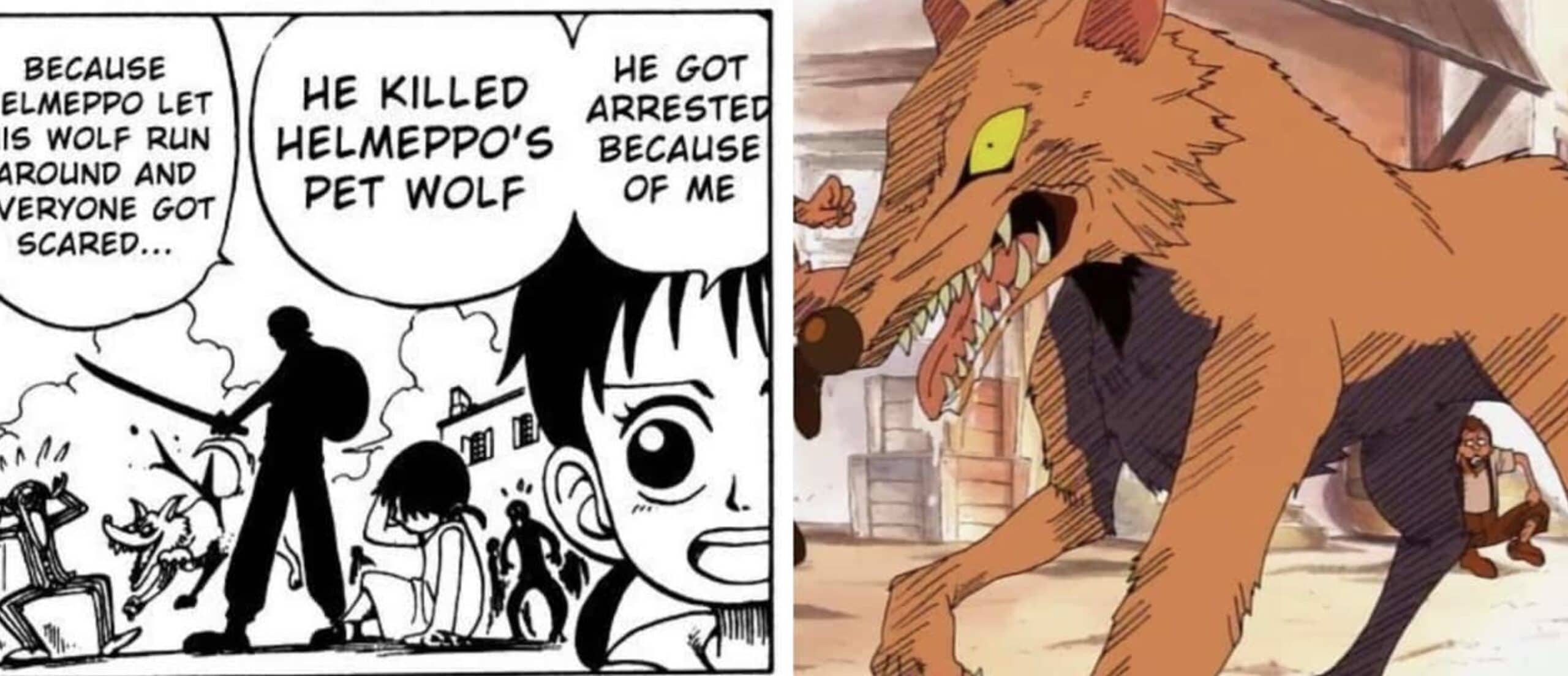
The anime adaptation often filters violence against animals that Oda inserts for drama or character building.
In this case, the anime preserves Zoro’s noble qualities through a struggle that doesn’t require brutal animal harm. Viewers still see Zoro’s fearless character while being spared distressing savagery from the manga source.
So the original manga can explore dark themes like animal violence as part of its unflinching storytelling.
However, the anime usually exhibits restraint when adapting such scenes for younger audiences. It lightens intense moments that could upset viewers while upholding the spirit of the story.
8. Betrayal within Buggy Sencho’s Ranks
Buggy the clown pirate has a deadly temper behind his silly veneer, as shown when he explosively executes a crewmate in the manga.
This shocking scene establishes Buggy’s capacity for unhinged violence against his own men. But the anime stops short of showing such a disturbing defeat.
When the hapless pirate accidentally references Buggy’s red nose, the manga has Buggy blast him point-blank with a Buggy Ball cannon.
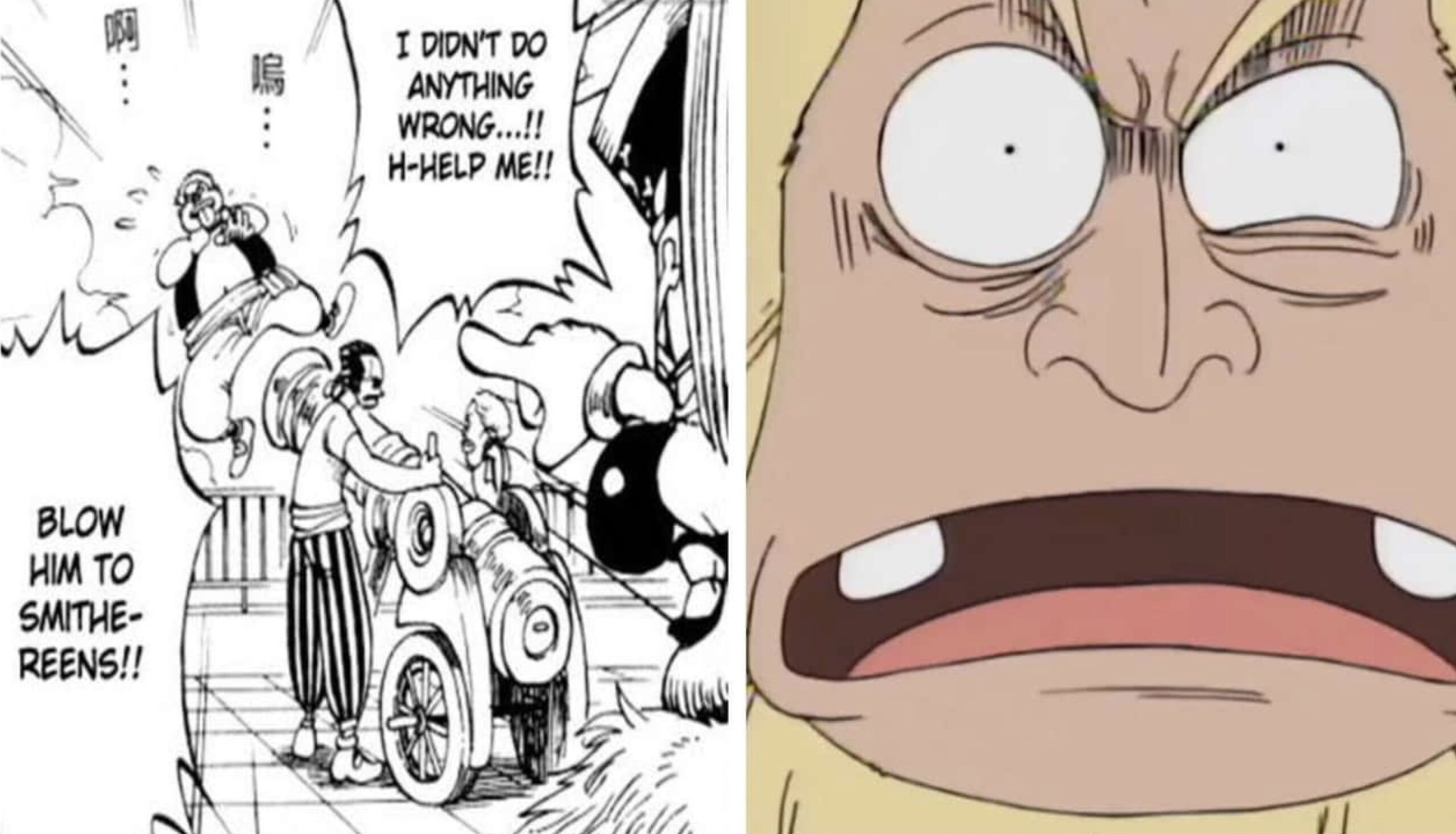
It’s a graphic demise that underscores Buggy’s short fuse. The anime keeps Buggy’s choking rage but spares viewers the grisly blown-to-bits fate.
Letting the crewmate survive avoids modeling lethal retribution for slights. The anime often shows restraint around excessive violence against human characters that Oda utilizes for drama.
Manga Buggy will go to savage lengths over petty triggers. Anime Buggy exhibits some restraint while still terrifying subordinates.
What manga readers experience and what viewers see differ regarding the boundaries of violence. Oda pushes the envelope in dramatic mortal moments between Buggy and his own man.
But the anime adaptation pulls back when interpreting scenes deemed too troubling or intense for its audience.
7. Bell-mère’s Tragic End
A heartbreaking early manga scene depicts the ruthless murder of beloved mother figure Bell-mère by Arlong’s crew.
She tragically cannot pay their extortionate fees, so Arlong executes her with a bullet to the head as Nami watches in horror. It’s a brutal, scarring event that fuels Nami’s development.
The sudden graphic death encapsulates the manga’s serious stakes. However, an on-screen headshot exceeds acceptable violence limits for the anime.
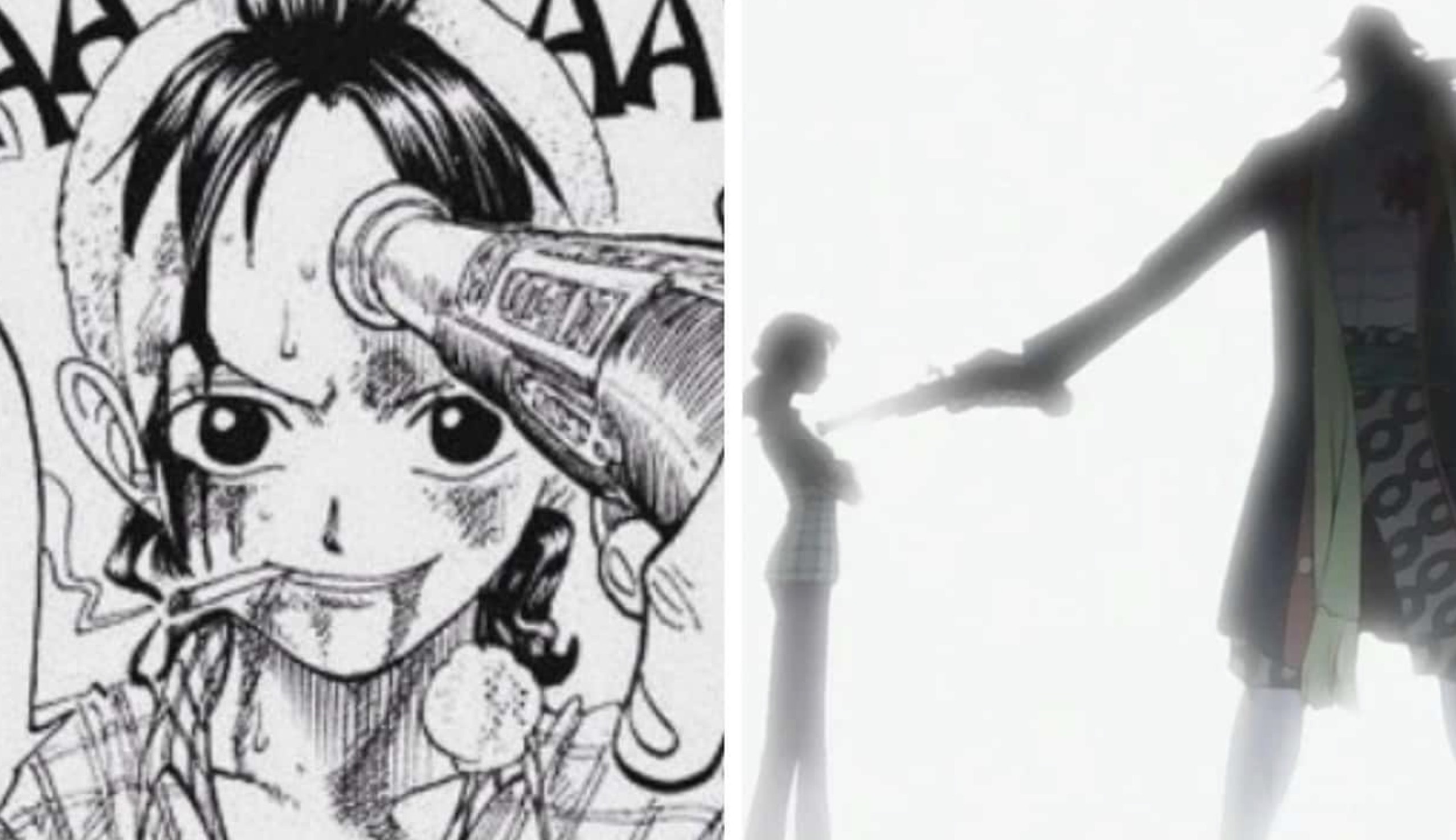
Instead, the animation shows Arlong taking deadly aim at Bell-mère’s chest rather than explicitly depicting the murder. His gun is clear implication enough without visceral gore.
This tactical editing demonstrates the anime grappling with Oda’s heavy themes. The manga presents an uncompromising world where innocence provides no protection from evil.
By slightly altering imagery while retaining the tragedy, the anime finds balance in portraying the same cruelty without graphic details.
In this way, the anime pays tribute to iconic moments from the manga while filtering content that could disturb young viewers.
Fans of the manga read Oda’s story raw and unfiltered, while the anime considers its global audience in carefully shaping the same impactful scenes.
6. Bartolomeo’s Brutal Act
Bartolomeo’s devotion to Luffy leads him to intense outbursts, including graphic moments toned down for the anime.
When a noble mocks Luffy in the manga, Bartolomeo furiously cuts out the man’s tongue to silence the verbal abuse towards his idol. It’s a disturbing overreaction showing his capacity for vengeance.
The anime avoids directly showing the grisly act of tongue removal. While keeping Bartolomeo’s extreme rage, it depicts him simply beating the noble rather than maiming him.
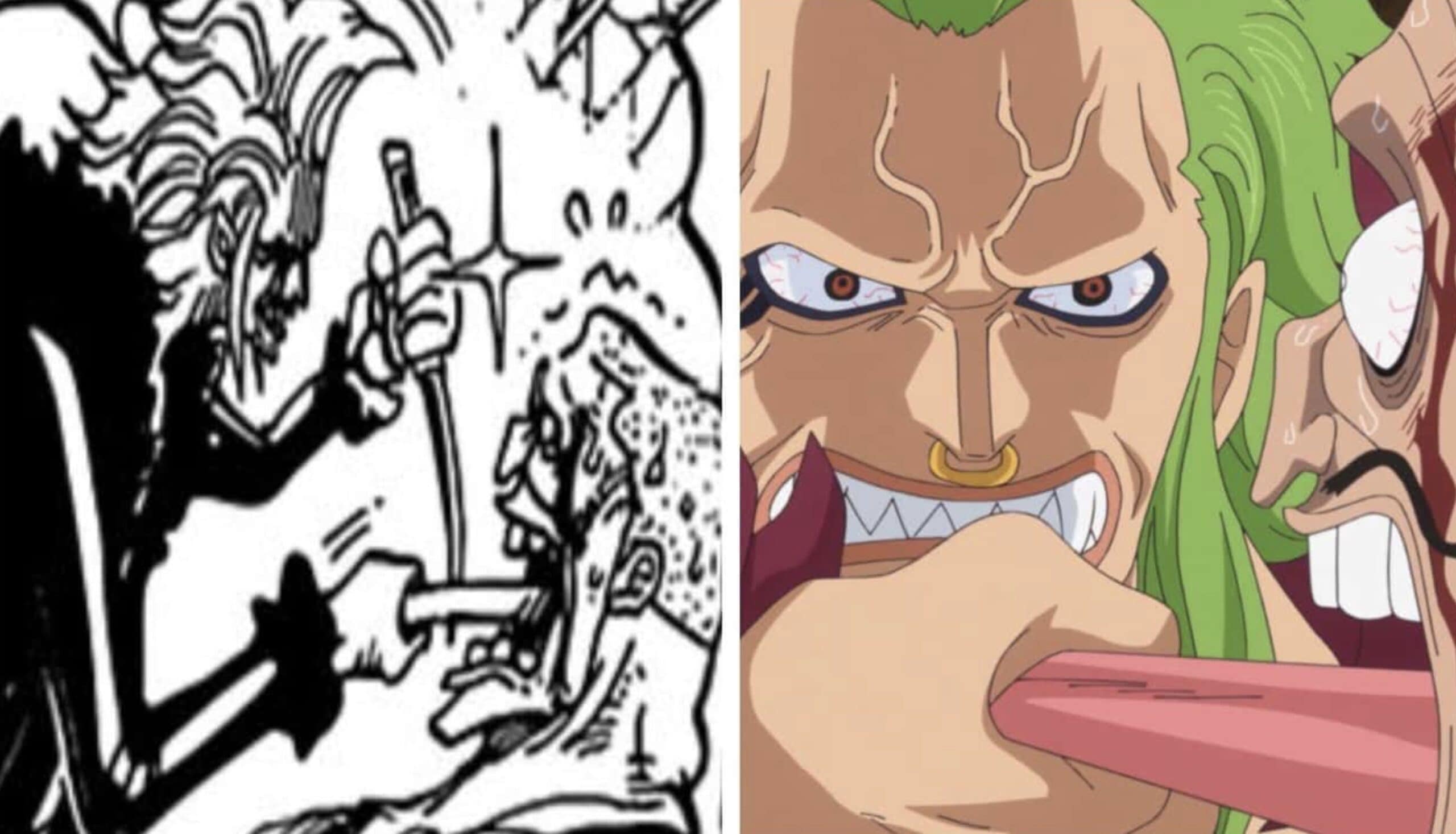
The revised scene still gets the point across without unsettling imagery.
Oda is willing to push violent boundaries to underscore the gritty, unforgiving nature of the characters. But the anime often reworks manga scenes deemed too visually disturbing for young viewers.
It preserves the emotional spirit while avoiding graphic details potentially upsetting or impressionable.
So again there is dissonance between manga and anime portrayals of hostility. What Oda puts in ink, the anime team may tweak for standards, either ethical or rating-related.
So fans of the original manga experience Oda’s unfiltered imagination, layering a darker edge, while the anime considers its global audience.
5. Zoro’s Drastic Move
A scene in Little Garden pushes Zoro to take extreme measures when trapped by villain Mr. 3’s wax powers.
With the wax engulfing his legs, the manga shows Zoro attempting to hack his own feet off in a desperate bid for freedom. Blood streams from his ankles as he goes through with this shocking self-mutilation. It showcases Zoro’s relentless survival instinct.
However, the intensity and gore of Zoro willingly injuring himself this severely is dialed back for the anime.
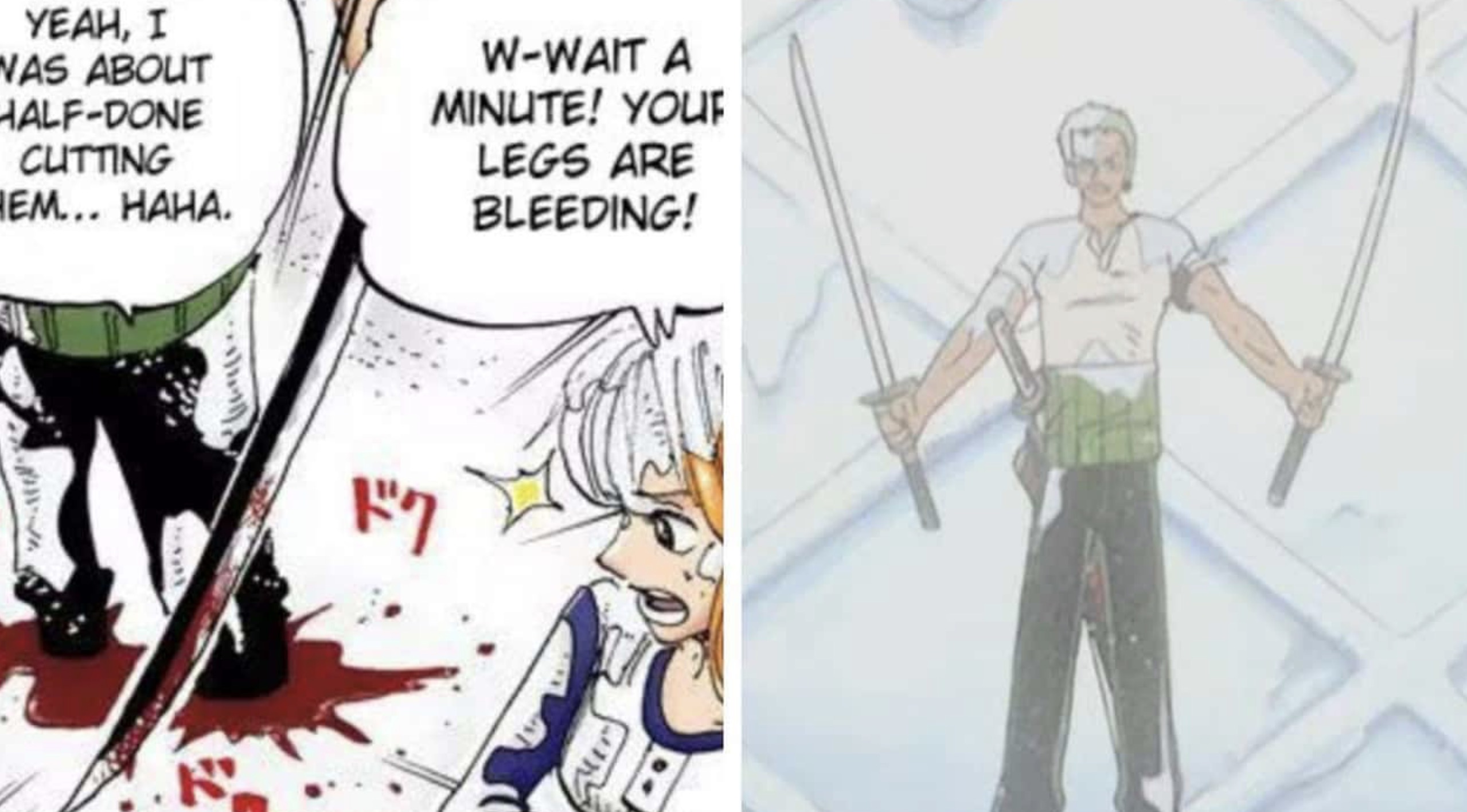
Some blood implies his chopping attempt, but the graphic imagery of him self-amputating is avoided. The anime preserves the scene’s spirit without crossing lines in depicting his desperation.
Oda does not flinch from illustrating brutal harm, even self-inflicted, when it raises stakes. But the anime carefully calibrates its violence, even if faithful to the manga context.
There is a line between suggesting horrific injury versus explicitly displaying it. Once again, Oda’s manga crosses that line while the anime pulls back.
In this way, the original manga explores darker, shocking themes to build tension. The anime adaptation maintains context while filtering graphic content potentially upsetting for young viewers.
So the full unflinching experience resides with Oda’s manga, while the anime considers its audience.
4. Akainu’s Ruthless Attack
The manga conveys the sheer destructive power of Admiral Akainu when he melts off part of the legendary Whitebeard’s head after Ace’s death.
It’s a shocking display underscoring Akainu’s lethal magma abilities. However, directly depicting such graphic harm exceeded acceptable violence limits for the anime adaptation.
Rather than vividly showing Whitebeard’s head burning away, the anime merely implies the damage through sound effects and character reactions.
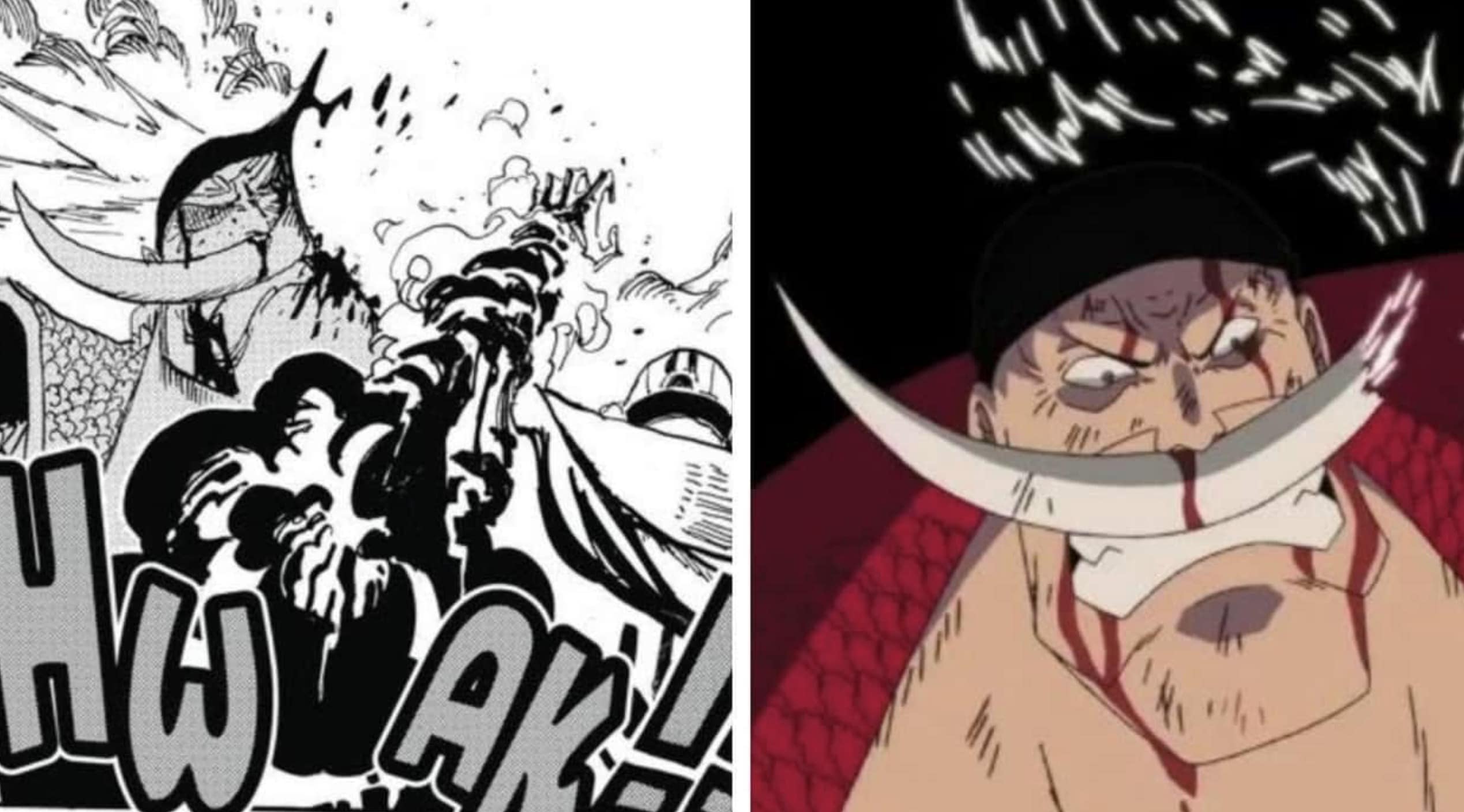
The full visceral visual is avoided despite accurately conveying Akainu’s merciless abilities. The anime preserves all story context without forcing viewers to see such grisly imagery.
Oda crafts iconic moments through unflinching portrayals of violence between powerful characters. But the anime exercises discretion regarding explicit depictions of harm, especially with beloved personalities.
There is a line between suggesting devastating injury versus displaying it directly. Once again Oda’s manga crosses that line, while the anime pulls back.
So manga readers experience Oda’s uncompromising vision. The anime remains faithful to his ideas but filters disturbing visuals to align with audience expectations.
Both mediums capture the intensity, but only the manga revels in graphic consequences at their most visceral level. The anime upholds standards suitable for all ages.
3. Young Luffy Marks His Face
Luffy’s iconic facial scar is actually given context right away in the manga’s very first chapter, which shows his backstory with Shanks.
Desperate to prove his bravery, kid Luffy stabs himself under his left eye to impress the pirates. So manga readers understand the scar’s origins early on.
Yet in the anime’s adaptation of the same flashback scene, young Luffy does not cut his own face. For years the scar lacked explanation to viewers.
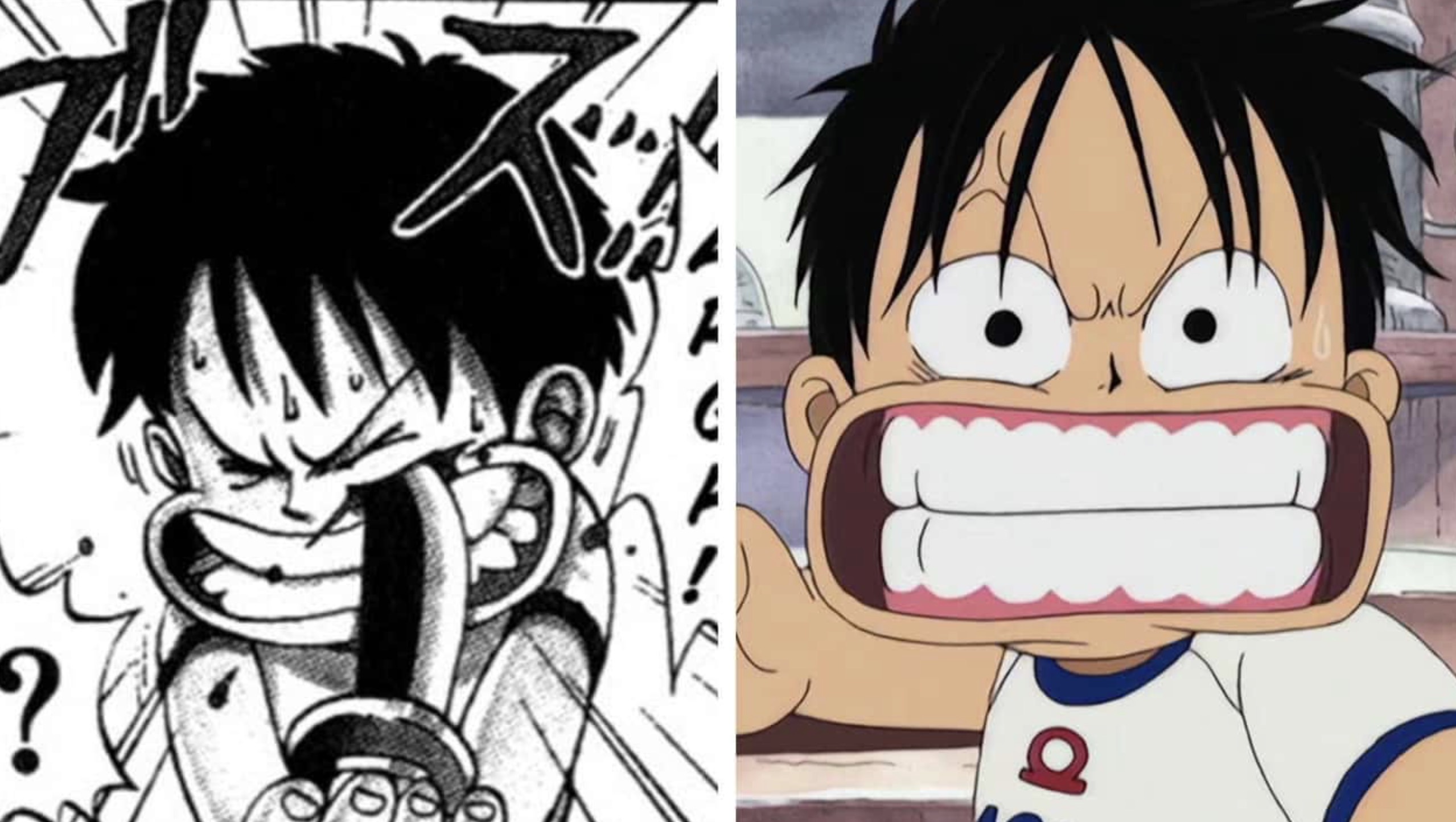
Finally, over 500 anime episodes later, a special episode animates the missing scene from the manga. Now anime fans can witness the disturbing act of child Luffy harming himself that led to his mark.
It’s an interesting example of the anime delaying revelations Oda built into early manga chapters. Showing a child intentionally scarring themself posed an ethical issue for the adaptation.
But the iconic scar lacked context until the anime adapted the scene much later in its run.
So again the manga leverages graphic moments to shape Luffy from the start and the anime judiciously frames over time for its audience.
Oda establishes ideas immediately in the manga while the anime rollout unfolds gradually on screen. Both portray the same beloved character, but ethical considerations drive different presentation choices.
2. Bellamy’s Betrayal
While infamous for being floored by Luffy in one punch, the manga shows Bellamy has his own capacity for violence.
When confronting those who cross him, Bellamy readily draws blood to establish dominance. This edgy ruthlessness helps harden his fearsome reputation.
However when adapting a card game confrontation for Bellamy, the anime omits his brutal stabbing of another pirate’s hand to accuse them of cheating.
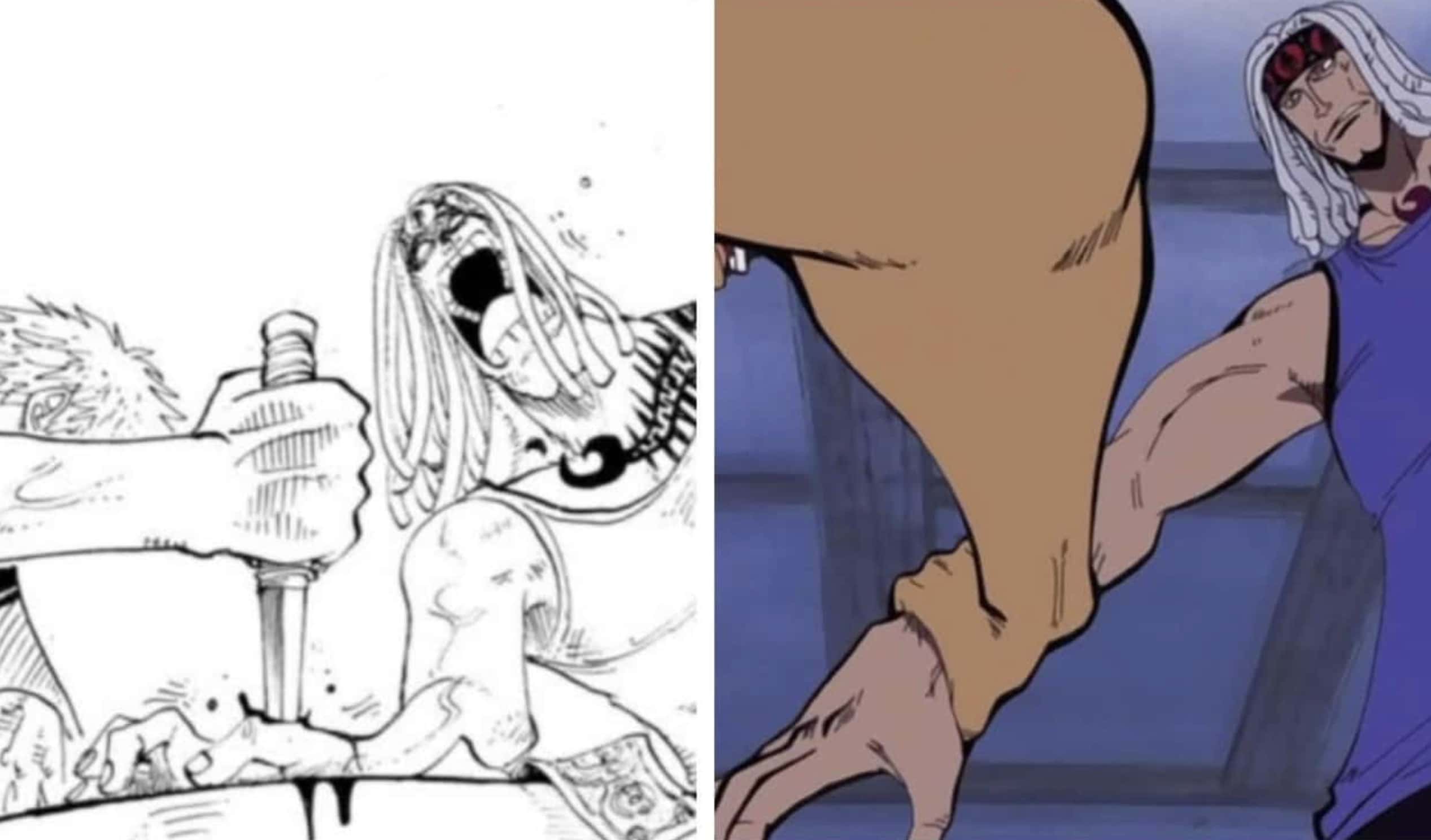
Likely deemed too intense for younger viewers, the scene instead shows Bellamy aggressively grabbing the man’s hand rather than knifing it.
So again Oda’s manga does not flinch from showing Bellamy embracing vicious methods as part of his unpredictable villainy.
But the anime smooths out his rough edges for audiences while preserving his intimidating persona. The full ruthless Bellamy resides in the manga only, with the adaptation filtering graphic moments.
This pattern persists in Oda’s first design a gritty, unrefined vision brought to life in ink. Then the anime team weighs standards and censorship considerations when animating from the source material.
So two distinct portrayals of the same volatile Bellamy emerge for manga versus anime fans.
1. Red Leg’ Zeff Eating His Own Foot
As we learn through a flashback scene, a young Sanji finds himself shipwrecked on a deserted island along with the notorious pirate Zeff “Red Leg” after their vessel is destroyed in a vicious storm. With limited provisions, the two-faced grim odds of survival in the days ahead.
In an act of selflessness to save Sanji from starvation, Zeff made the agonizing choice to amputate his own right leg just below the knee using a sharp rock.
He then roasted the severed limb over a fire and compelled the reluctant Sanji to eat, insisting the boy needed the nourishment from his flesh to stay alive.

Though graphic, this disturbing sacrifice allowed Sanji’s life to continue until his eventual rescue. The very pirate Sanji would later call both mentor and father had given up a part of himself so the youth could have hope.
The incident serves as a formative moment for Sanji, one that shapes his sense of duty to provide food for the hungry.
What Is The Difference Between One Piece and One Piece 4Kids?
When the popular anime One Piece was localized for North American audiences, several modifications were made by the company 4Kids to avoid copyright issues, make the show more child-friendly, and conform to broadcast standards.
Most noticeably, the name of the character Roronoa Zoro was changed to “Zolo” to prevent potential conflicts with the classic swashbuckling film The Mask of Zorro.
Likewise, the mystical Devil’s Fruits that give many characters special abilities were renamed the generic “Cursed Fruits” to downplay religious references.
Devil Fruits to Cursed Fruits
Specific attack names also saw alteration, with Luffy’s signature “Gum Gum Pistol” reworked as “Gum Gum Blast” to lessen violent connotations.
But some of the most pervasive changes came in the form of censorship – scenes depicting smoking were considered inappropriate for children’s programming.
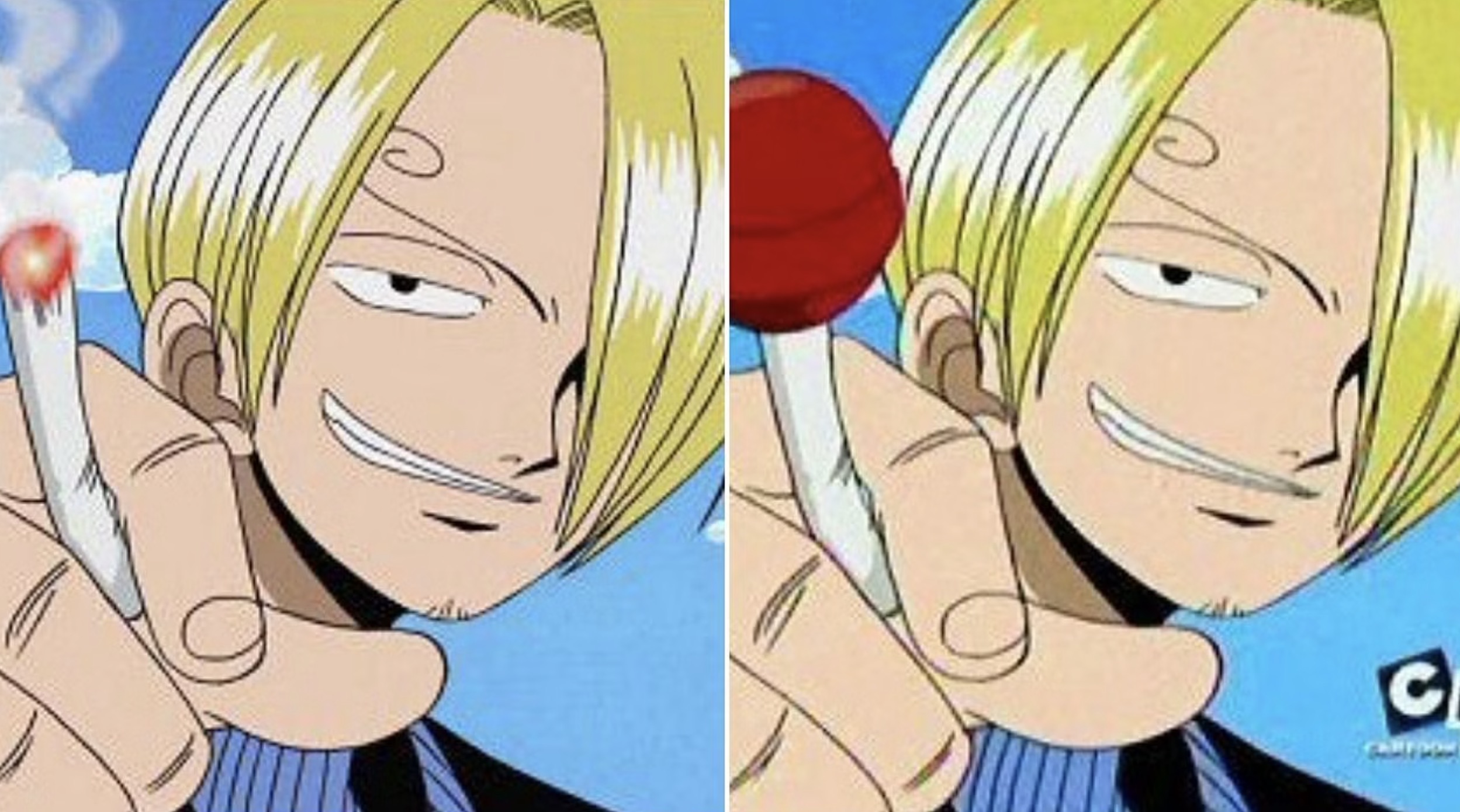
As a result, whenever the chain-smoking cook Sanji is shown with a cigarette, it is awkwardly replaced with a lollipop. Entire sequences showing him lighting up were cut entirely.
While nonlinear editing allowed some censorship to be reused across episodes, most changes occurred uniformly throughout the 4Kids version.
Fans argue these localization choices end up creating an inaccurate representation of the original work. Nonetheless, the dub brought One Piece to a wider viewership that might have otherwise lacked exposure to anime.
In keeping with making the anime more child-friendly, numerous moments of fighting, drinking, and questionable behavior were cut or edited.
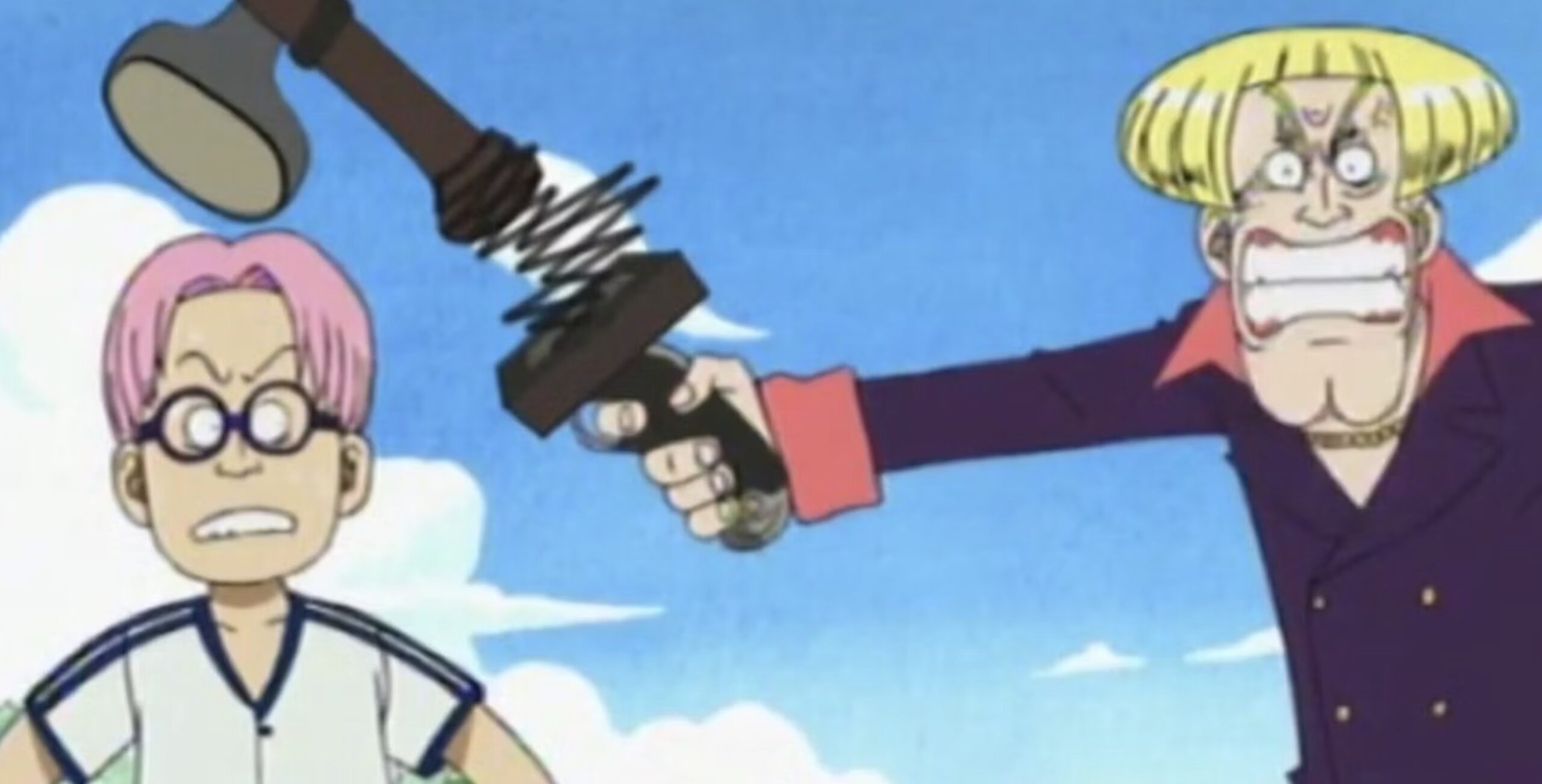
A pirate’s speculation that a barrel might be “filled with booze” is changed to a silly riff about it holding monkeys.
Censorship and Smoking
Other moments of pirate violence – including Alvida striking her crew with a mace and Luffy punching Coby – are removed entirely.
Visible impacts were also minimized. When Nami kicks an enemy in the crotch, it’s shortened to reduce the visible aggression. Instead of blades breaking when Luffy blocks them, a cartoonish bounce sound effect is inserted.
And Luffy’s physical abuse of Coby is repeatedly mitigated – the first strike is cut, the second muted, and Coby’s reactions are made less serious by changing his lines about being accustomed to beatings.
In total, over a dozen violent moments large and small were altered or removed, typically replacing piratical vice with slapstick humor.
While these changes downgrade much of the original spirit, the localization team’s intent was shielding young viewers from deemed inappropriate content.
Nonetheless, many fans argue such heavy editing creates an inaccurate picture of the iconic anime.

